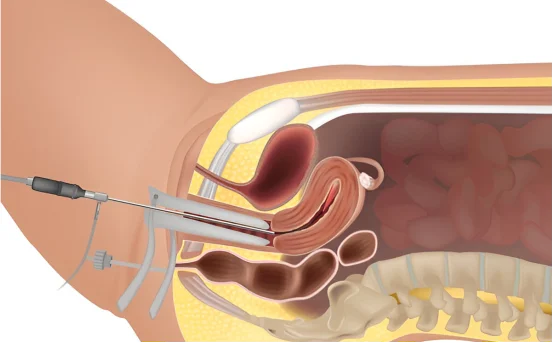Mandibular fixation is a crucial surgical procedure used to stabilize and realign fractured lower jawbones (mandible). It plays a key role in maxillofacial trauma management and helps restore both function and aesthetics to the face.
One of the most effective treatments for such fractures is mandibular fixation a surgical procedure aimed at stabilizing and realigning the broken segments of the lower jaw. This procedure ensures that the fractured bones heal correctly and that the patient regains full functionality of the jaw. Thanks to advances in maxillofacial surgery, mandibular fixation techniques have become more refined, allowing for faster recovery, minimal scarring, and improved outcomes.
What Is Mandibular Fixation?
Mandibular fixation, also known as jaw fracture fixation or mandibular fracture stabilization, is a surgical technique used to treat fractures in the lower jaw. These injuries are often caused by trauma such as road accidents, physical assaults, sports injuries, or falls.
The primary goal of mandibular fixation is to hold the fractured bone segments in place, allowing them to heal correctly. Fixation ensures proper alignment of the jaw, prevents abnormal bite (malocclusion), and supports normal chewing, speaking, and breathing functions.
Indications for Mandibular Fixation Surgery
Mandibular fixation is typically recommended for patients with :-
-
Displaced or comminuted mandibular fractures
-
Multiple facial bone fractures involving the mandible
-
Malocclusion due to jaw fracture
-
Open or compound mandibular fractures
-
Pathological fractures due to infection or tumors
This procedure is commonly performed by oral and maxillofacial surgeons under general or local anesthesia, depending on the extent of the injury.
Preoperative Evaluation and Planning
Before mandibular fixation, a detailed evaluation is conducted. This includes :-
-
Clinical examination of the face, teeth alignment, and jaw movement
-
Imaging studies such as X-rays, panoramic radiographs, or CT scans to assess the fracture site and extent
-
Review of medical history, especially in cases involving bleeding disorders, dental infections, or previous facial surgeries
The surgical team plans the fixation method based on the type and location of the fracture, patient age, overall health, and aesthetic considerations.
Step by Step Procedure of Mandibular Fixation
- Anesthesia and Preparation :- The procedure usually begins with administering general anesthesia, although minor fractures may be treated under local anesthesia with sedation. The surgical area is cleaned and sterilized to reduce the risk of infection.
-
Exposure of the Fracture Site :- Depending on the fracture location and chosen fixation technique, the surgeon may make an incision inside the mouth (intraoral approach) or outside the jaw (extraoral approach). The intraoral route avoids visible scars and is preferred for simple fractures.
The fracture site is carefully exposed, and the broken bone segments are identified and cleared of any soft tissue interference.
-
Reduction of the Fracture :- The next step involves reduction, which means aligning the fractured segments of the mandible in their correct anatomical position. The surgeon ensures that the dental occlusion (bite) is accurately restored before proceeding.
Sometimes temporary devices like arch bars or intermaxillary fixation screws are used to secure the upper and lower jaws together during the reduction.
-
Fixation of the Fracture :- Once the bone fragments are aligned, rigid fixation is applied using titanium miniplates and screws or other fixation devices. These plates are contoured to match the jawline and are carefully screwed into place to hold the bone securely.
In certain cases, resorbable fixation materials may be used, especially in children or when long-term metal implants are not ideal.
- Closure of the Surgical Site :- After successful fixation, the surgical wound is irrigated with sterile saline. The incisions are closed using absorbable or non absorbable sutures, depending on the location. If intraoral incisions were made, the sutures usually dissolve over time.
- Postoperative Monitoring :- Patients are monitored during recovery for airway management, pain control, and any signs of bleeding or infection. Intermaxillary fixation may be continued temporarily for additional stability in complex cases.
Postoperative Care and Recovery
Post-surgical care is vital for optimal healing and function. Patients are usually prescribed :-
-
Pain relievers and antibiotics
-
Soft or liquid diet for several weeks
-
Oral rinses and good dental hygiene practices to prevent infection
-
Follow-up visits for imaging and suture removal if needed
Depending on the severity of the fracture, healing typically takes around 6 to 8 weeks. Most patients return to normal function gradually, although full jaw mobility may take a little longer to restore.
Risks and Complications
Although mandibular fixation is generally safe and successful, some complications can occur, including :-
-
Infection at the surgical site
-
Improper bone healing or non-union
-
Loosening of fixation plates or screws
-
Damage to nerves leading to temporary numbness or tingling
-
Scarring (especially with external incisions)
Prompt follow-up and adherence to post op care instructions significantly reduce the likelihood of complications.
Types of Mandibular Fixation Techniques
There are several methods used for mandibular fixation, depending on the case :-
- Closed Reduction :- This non surgical method involves repositioning the jaw and holding it in place using arch bars or wires (intermaxillary fixation). It is typically used for minor fractures and requires immobilizing the jaw for a few weeks.
- Open Reduction and Internal Fixation (ORIF) :- This is the most common surgical approach where the fracture is exposed and fixed using miniplates, screws, or other hardware. It allows precise alignment and quicker recovery.
- External Fixation :- In severe or infected fractures, external fixation may be used. Here, a metal frame outside the jaw holds the bone in place using pins inserted into the skin. It’s a temporary but effective solution for complex fractures.
Advantages of Mandibular Fixation
-
Accurate restoration of jaw alignment and bite
-
Faster return to normal jaw function
-
Reduced need for prolonged jaw immobilization
-
Lower risk of complications with modern fixation techniques
-
Minimal scarring with intraoral approaches
Conclusion
The procedure of mandibular fixation is a critical intervention in treating lower jaw fractures, ensuring structural stability, proper healing, and restoration of oral function. With advances in surgical techniques and fixation devices, the outcomes are highly successful when performed by experienced oral and maxillofacial surgeons.























